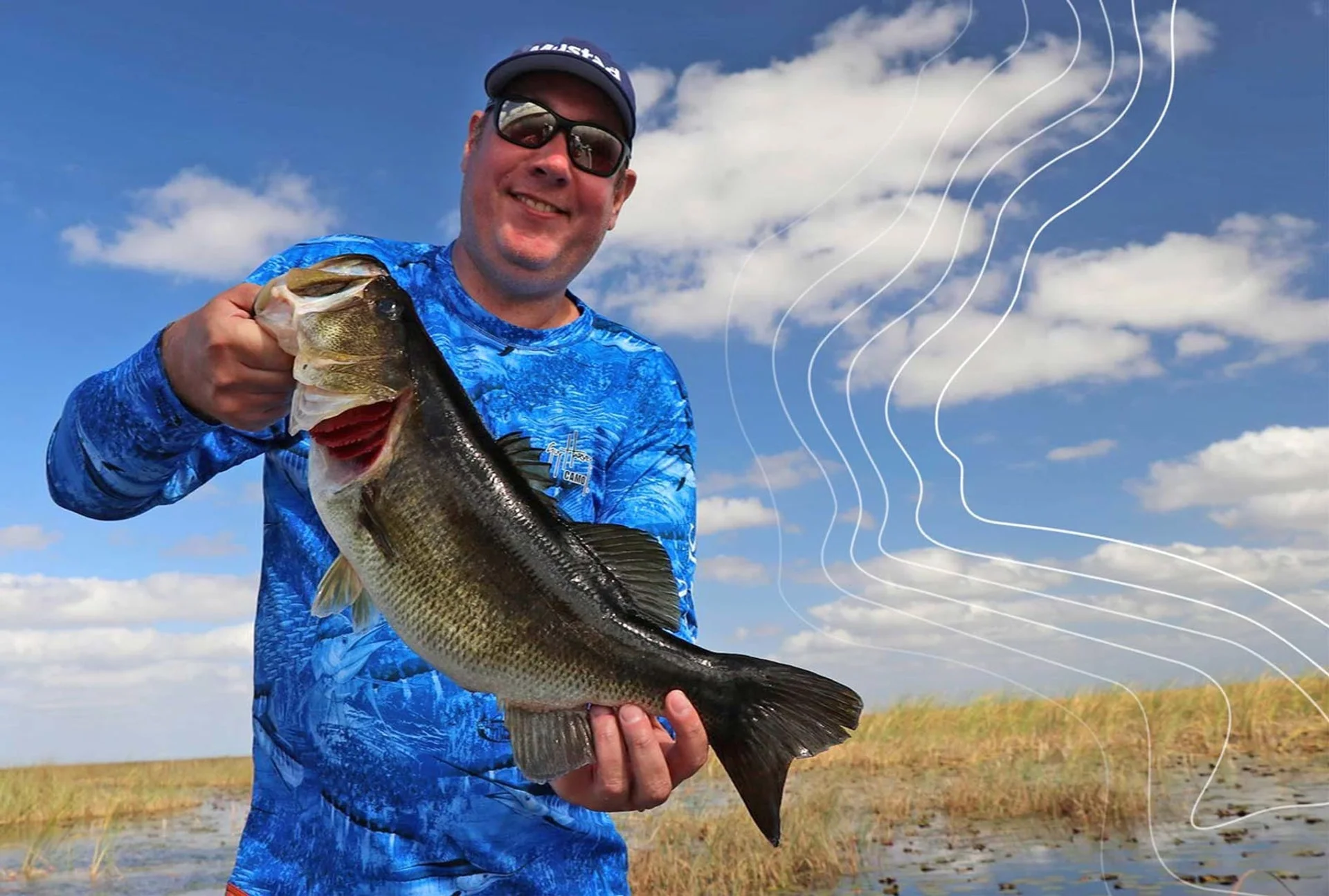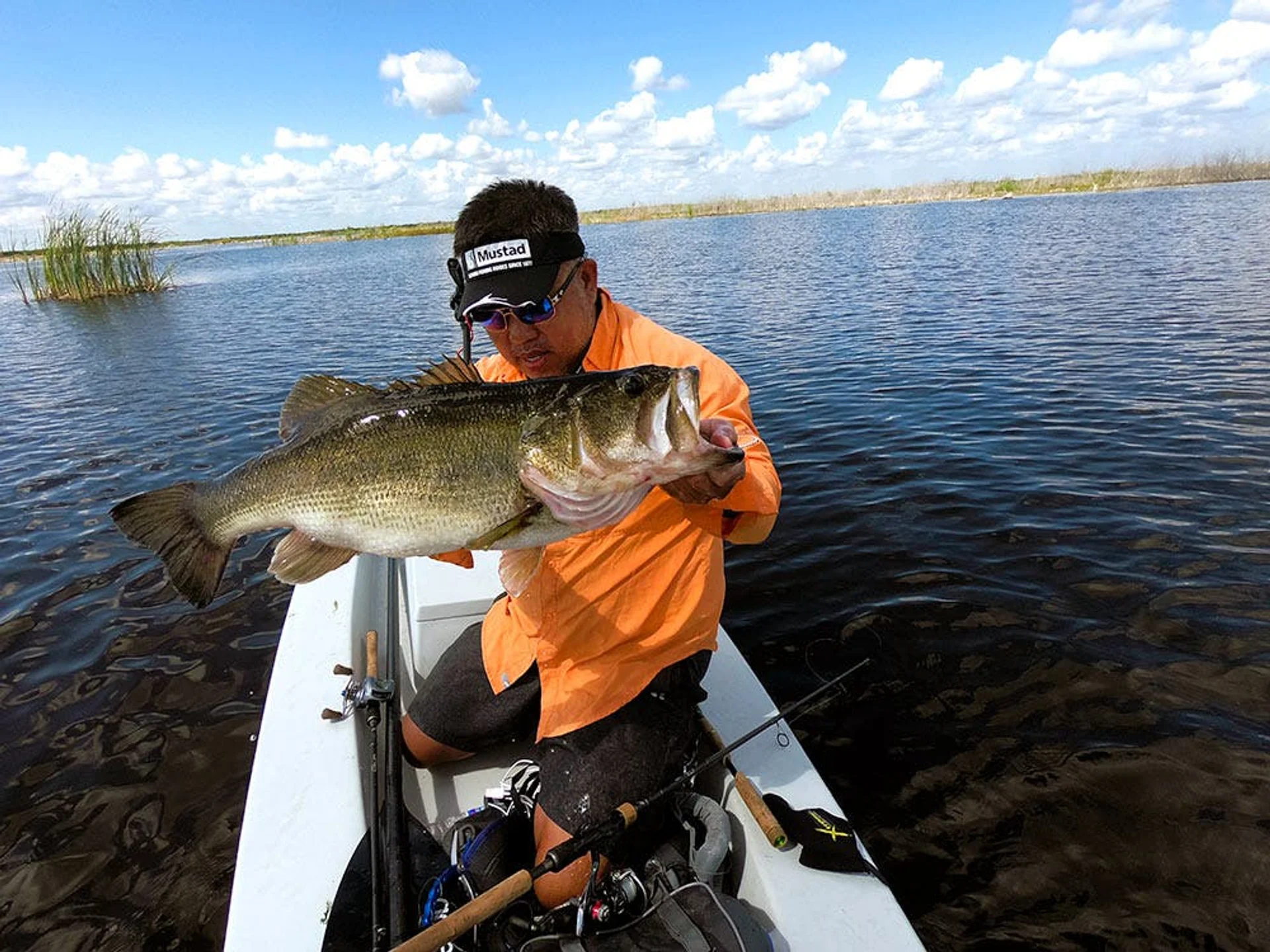C-Rig Sensibilities

With your California rig right on track, more bass will not only bite but stay on.
It’s not the sexiest of bass tactics, but the Carolina rig is unquestionably one of the most dependable techniques you could use. From prospecting large staging areas for prespawners, to probing river system ledges to covering broad areas of offshore humps or main lake points, the old ball-and-chain will put fish in the boat.
The basic design starts with a weight flanked by beads threaded onto your main line. The lower bead protects the knot linking your main line to a swivel that holds your leader and a Mustad Grip-Pin Big Bite 2X round bend hook on the opposite side. However, beads are also intended to make fish-attracting noise, so consider doubling up and/or adding a brass or tungsten bead for maximum sound.
As you drag your rig through the water, every time it bumps a rock or a piece of wood, those beads clicks and clacks that turn heads the right way. Add to that the clunking of a weight, which stirs up bottom like a foraging baitfish and it’s no surprise that the Carolina rig produces even when the bite’s tough.
When clear water and/or pressured fish require lighter presentations, downsizing your weight is the first move, but you might also consider a Carolina Keeper — a simple piece of plastic with a compressed center hole that expands when the keeper is squeezed. This opening allows you to move the keeper up and down your main line to position the weight, which sits above it.

Raising or lowering the keeper instantly adjusts leader length. The fundamental benefit here is one knot (at the hook) instead of three knots (two at the swivel, one at the hook) with a conventional arrangement. From a presentation standpoint, the Carolina Keeper allows you to make a more streamlined presentation. The only consideration is that your main line and leader are the same line, so this lighter version of the rig may not be your best choice in rougher neighborhoods.
Weight Shape: Egg sinkers are the standard, but when pulling your Carolina rig through particularly snaggy areas, using a slender cylinder style sinker will save you a lot of frustration — and tackle.
Baits: Most any plastic shape can find some application on the back of a Carolina rig, but lizards and creature baits like the Z-Man Boar HogZ do much of the work. You’ll also want to try a big ribbon tail worm during the summer months, while a small finesse worm on a scaled down C-rig often produces during post-frontal conditions.
Leaders: Opinions vary somewhat on the proper leader material, but the decision should be made based on what you’re trying to accomplish. Most anglers want their baits to rise up for better visibility and in this case, floating monofilament is your best bet.
However, if you want to work a lower profile presentation, maybe hugging the bottom with a big worm or a lizard, fluorocarbon is the way to go. Fluoro leaders will also give you a higher level of snag resistance when you’re Carolina rigging rougher areas, perhaps one with zebra mussels.
